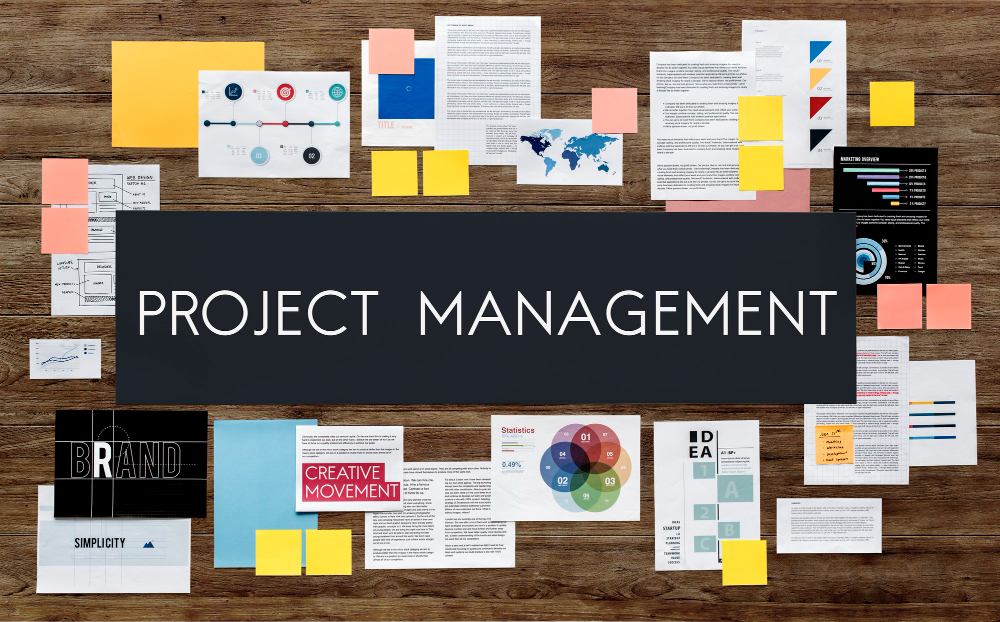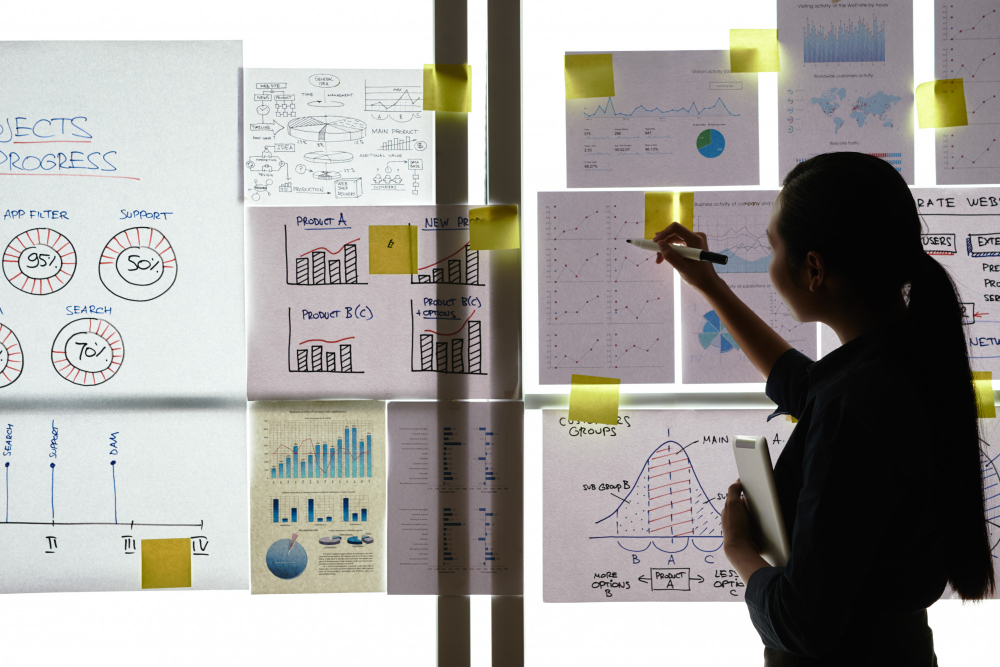Enterprise Project Management (EPM) Software

Introduction
Welcome to the future of enterprise project management! The year 2025 is coming, project management isn’t what it used to be. With ever-evolving technologies and methodologies, the tools we use to manage projects are experiencing drastic changes. It’s time to explore the key trends shaping the future of enterprise project management software. Whether you’re using platforms like Zoho, Wrike, or Smartsheet, the landscape is set to evolve in intriguing ways. Let’s dive into the movements reshaping your favorite project management tools, making them more efficient and intuitive than ever before.
The Evolution of Enterprise Project Management Software
When we think about how we managed projects ten, twenty, or even fifty years ago, it’s clear we’ve come a long way. From sticky notes and whiteboards to full-fledged digital platforms, the transformation has been nothing short of revolutionary. So, how did we get here, and what’s driving the change?
Historical Overview
Back in the day, managing projects was more art than science. The tools were basic—think ledger books and typewriters. This wasn’t ideal, but honestly, it worked because that’s all we had. Fast forward to the 1980s and 90s, and things started to change. With the advent of personal computers, project management began to see its first real technological boost. Software like Microsoft Project came into play, offering organizations the ability to manage tasks electronically rather than manually. It was a game-changer but still limited by today’s standards.
As we hit the 2000s, the Internet changed everything. Cloud-based solutions entered the scene, allowing team members to collaborate from anywhere in the world. This flexibility was a massive leap forward. Suddenly, the focus was on efficiency, remote access, and real-time updates. The stage was set for innovation, and the enterprise project management software we’re familiar with today began to take shape.
Key Drivers of Change
You’ve got to ask, what’s pushing us forward? Why this continuous evolution in enterprise project management software? There are a few key drivers:
1. Globalization: Teams aren’t just local anymore. They’re global, spanning multiple time zones and cultures. Effective software has to bridge these gaps.
2. Speed of Business: If you’re not fast, you’re last. Companies need tools that keep up with the rapid pace of business today. There’s no time to lose when you’ve got fierce competition breathing down your neck.
3. Technological Advancements: Seriously, even in our everyday lives, we expect tech to do all the hard work for us—think Alexa or Siri. The same goes for project management. Software today incorporates AI and machine learning to offer features we didn’t even know we needed.
4. Cost Efficiency: Let’s face it, nobody wants to blow their budget on management tools. Companies are always looking to cut costs and improve ROI. Efficient project management software helps achieve that balance.
5. User Experience: We demand intuitive, easy-to-use interfaces. If a platform is too complicated, nobody wants to invest time and energy in learning it, let alone using it daily.
Emerging Trends in Enterprise Project Management Software

With these driving forces in mind, let’s look at where enterprise project management software is headed. If history tells us anything, it’s that the future holds incredible innovations that will transform how we work.
Enhanced Collaboration and Communication Tools
Remember when collaboration meant sending emails back and forth for days? Yeah, not the most efficient system. Today, and moving forward, the emphasis is on seamless communication and collaboration among team members, wherever they are.
– Real-time Communication: Platforms are integrating chat functions and video conferencing tools directly into the software. Think Slack or Zoom capabilities, but built right into your project management tool. Forget switching apps; keep all discussions in one place.
– Shared Workspaces: No more “who has the latest version of this document?” fiascos. Shared workspaces allow everyone to access, edit, and update documents easily. It ensures everyone is on the same page, literally and figuratively.
– Interactive Dashboards: Visualization tools have become incredibly sophisticated. Not only can team members see project timelines and current tasks, but they can also interact with these dashboards to adjust priorities or highlight bottlenecks.
Integration of AI and Automation
AI and automation aren’t just the stuff of sci-fi movies anymore. They’re here, and they’re about to become your best coworkers.
– Predictive Analytics: Imagine knowing in advance when a project will likely go off track and having suggestions on how to avoid those pitfalls. AI can help identify patterns from past projects to offer insights and forecasts.
– Task Automation: Let’s be real, not every aspect of project management is thrilling. Automating repetitive tasks like data entry or routine reporting saves time and frees up energy for more strategic work.
– Improved Decision Making: With AI’s ability to process and analyze massive amounts of data, decision-making is quicker and more accurate. Faster resolutions to issues mean projects stay on schedule.
Advanced Data Analytics and Reporting
Data… In short, It’s everywhere and with good reason. Data analytics are almost magical in how they transform mind-numbing numbers into actionable insights.
– Comprehensive Reporting: Advanced analytics tools pull data from multiple sources to create cohesive, insightful reports tailored to specific needs—from big-picture dashboards to granular, task-specific reports.
– Resource Management: Effective use of resources can make or break a project. Advanced analytics help identify who’s working on what, who’s overloaded, and where there’s room for optimization.
– Real-Time Progress Tracking: Say goodbye to old-school status meetings. Real-time analytics provide instant insights, so you’re always aware of project status, potential hiccups, and necessary adjustments.
Generally, the future of enterprise project management software isn’t just about digitizing old systems; it’s pushing boundaries to create a holistic, efficient, and user-friendly experience. From enhanced collaboration tools to the mighty power of AI, these platforms are setting the stage for a more connected and streamlined work environment. What’s more, as these technologies continue to evolve, they’ll undoubtedly unlock even more exciting possibilities. The bottom line: if you’re in the business of managing projects, the future is looking incredibly bright. Get ready to embrace the change!
Leading Project Management Software Solutions for 2025

Choosing the right project management tools can feel a bit like finding the perfect pair of shoes. You need something that not only fits well but also complements your style and handles everyday challenges with ease. This year, a few heavy hitters are on the radar leading the pack in enterprise project management software. Let’s dive in and check out what they offer.
Zoho
Zoho has been around the block a few times and knows exactly what project teams need. Often hailed as a jack-of-all-trades in the digital workspace realm, Zoho Projects is packed with features that make managing tasks, teams, and timelines a breeze.
– Scheduling and Task Management: Offers Gantt charts, time tracking, and task dependencies to help visualize project progress.
– Collaboration Tools: Engage with team members through forums and chat options.
– Integrations: Syncs seamlessly with Zoho’s suite of apps and third-party applications like Google Drive and Microsoft Teams.
– Customization: Proposes a high degree of customization – you can pretty much mold it to fit your process.
With an emphasis on transparency and simplicity, Zoho makes project management less of a chore and more of a strategic advantage.
Wrike
Wrike stands out for its robust capabilities and amiable user interface. Whether you’re a small team or a large enterprise, Wrike can cater to your needs with its dynamic framework.
– Customizable Dashboards: Allows you to create widgets and reports tailored to your preferences.
– Workload Management: Keeps your team balanced by displaying workloads across projects, so you know who’s got what on their plate.
– Templates: Provides ready-made templates to jumpstart projects without the headache of starting from scratch.
– Security Features: Boasts stringent security protocols to ensure your project data remains safe and sound.
If collaboration and communication are your cornerstones, Wrike offers a structured yet flexible environment where your teams can thrive.
Smartsheet
Smartsheet embraces the spreadsheet-like interface most project managers are familiar with, but with enhanced capability to foster collaboration and transparency.
– Ease of Use: The intuitive interface allows for quick adoption across teams.
– Automation: Automates repetitive tasks, freeing up time for more strategic efforts.
– Resource Management: Keep tabs on project budgets, schedules, and allocations with ease.
– Reporting and Dashboards: Create powerful visual reports to provide stakeholders with a clear view into project status.
For those who love data manipulation and visibility in their work processes, Smartsheet brings spreadsheets to life with cutting-edge project management functionality.
Quickbase
Quickbase is different in that it’s a no-code application. This means creating and managing projects becomes a highly customized endeavor tailored to your team’s workflows.
– Flexibility: Adapt the tool to fit your business with bespoke applications.
– Integration Capabilities: Connect seamlessly with other software applications via APIs.
– Scalability: As your team grows, Quickbase grows with you, making sure your tools are never left behind.
– Easy Deployment: Simple and speedy setup that maximizes efficiency without the need for extensive IT help.
Quickbase is an ideal choice for those who need project management software that can mold perfectly to specific workflows without a steep learning curve.
monday.com
monday.com has carved out a niche for itself by making project management more visual, more interactive, and definitely more fun.
– Visual Workspaces: Boards can be customized to track anything you need, with drag-and-drop simplicity.
– Team Collaboration: Invite your team to add updates and share files within tasks to keep everyone on the same page.
– Automation: Simplifies repetitive processes with automation recipes to trigger actions based on preset conditions.
– Integration: Syncs with a multitude of apps, so work doesn’t get disrupted.
If you crave an engaging and collaborative space where productivity and creativity can coexist, monday.com might just be your match.
AFAS Software
AFAS Software approaches project management with a strong focus on integrating business processes into a single ecosystem.
– Integration of HR and Finance: Seamlessly brings project management, HR, and financial processes under one roof.
– Data Security: Ensures your data is securely managed with top-notch security protocols.
– Scalable Solutions: Tailors to your organization’s size and needs, whether you’re a start-up or a large-scale enterprise.
– User-Friendly Interface: Intuitive interfaces that foster user engagement and minimize training time.
AFAS Software is the go-to for organizations aiming to streamline multiple aspects of their business operations into one cohesive system.
Resource Guru
Resource Guru concentrates on resource management, specifically making sure the right people and equipment are in the right place at the right time.
– Simple Resource Scheduling: Drag-and-drop scheduling to rapidly allocate resources where they’re most needed.
– Availability Insights: Cut down the guesswork with at-a-glance views of who’s available when.
– Reports: Offers insightful reports to help make more informed resource decisions.
– Integrations: Links up with other tools and platforms to keep data flowing smoothly throughout your project ecosystem.
For companies where resource management is key, Resource Guru provides a straightforward and elegant solution to never miss a beat.
Anticipating Future Project Management Trends in 2025

Looking ahead, 2025 is set to be a game-changer for enterprise project management. The tools might be evolving, but there are some unmistakable trends aiming to reshape how we manage projects. Understanding these now will prepare us for the future and, let’s be honest, who doesn’t love staying ahead of the game?
Increasing Focus on User Experience
Notice how tech-savvy nine-year-olds today can do things with a smartphone we never imagined possible at their age? That’s because user experience has become a central focus of technology, and project management tools are following suit.
– Intuitive Interfaces: Expect project management software to adopt more intuitive menus and interfaces that even the least tech-savvy person on your team can navigate easily.
– Voice Commands and AI Assistance: Like asking Siri or Alexa a question, future project management tools may integrate voice commands and personal AI assistants to help with task updates, scheduling, and more.
– Feedback Loops: Developers will aim for continuous feedback mechanisms within the tool to improve and adapt user experiences consistently.
As teams diversify, ensuring accessible, and understandable user experiences will become both necessary and beneficial for productivity and morale.
Expansion of Mobile Capabilities
If you haven’t noticed yet, we’re glued to our devices like bees to honey. Tablets and smartphones have become our go-to gadgets for managing both personal and professional tasks on the fly.
– Full Mobile Functionality: Project management apps will become as capable on mobile devices as they are on desktops, enabling work from virtually anywhere.
– Offline Access: To cater to teams with varying connectivity levels, there will be an increase in offline functionality and syncing capabilities.
– Push Notifications: More intelligent notification systems will allow users to choose what they want to be alerted about, helping them to manage information overload efficiently.
As remote work continues to gain traction, mobile empowerment will be key to seamlessly managing tasks and projects without missing a beat.
Growing Importance of Customization and Flexibility
One-size-fits-all solutions are great in theory, but often miss the mark in practice. As businesses become more nuanced, project management tools that offer robust customization and inherent flexibility will be the champions.
– Flexible Licensing: Allow companies to scale up or down their software usage, accommodating changes in their workforce efficiently and cost-effectively.
– Modular Features: Instead of bogging users down with features they don’t need, software will likely offer modular capabilities that users can narrow down according to their needs.
– APIs and Integrations: The landscape will see an increase in API availability enabling diverse software systems to talk to each other more fluidly, fostering an interconnected digital ecosystem.
More businesses are recognizing that what works for one team might not work for another, and having the flexibility to customize software provides a competitive edge.
In conclusion, the future is bright and full of promise for enterprise project management software. 2025 has introduced us to powerful tools like Zoho, Wrike, Smartsheet, Quickbase, and others, while 2025 looks set to push boundaries even further by enhancing user experiences, expanding mobile capabilities, and emphasizing flexibility and customization. The good news? You don’t need to have everything figured out just yet. Understanding what’s on the horizon gives you the insight to make informed decisions and the foresight to keep your teams ahead of the curve.
Conclusion
As we look towards the future of enterprise project management software, it’s clear that staying on top of upcoming trends is crucial for businesses aiming to thrive nowadays and beyond. From AI-powered tools to more integrated platforms, the landscape is rapidly evolving. By keeping an eye on what’s coming, organizations can be better prepared to adapt and succeed. Embrace these changes, leverage the advancements, and your projects will not only meet but exceed expectations.
You might also be interested in Project Management Software Solutions for Construction Professionals



